Product Close-ups
Accucraft K-4s Close-up
Jul 19, 2006


By Noel Widdifield
LSOL.com Managing Editor |
Author
Bio
The Accucraft K-4s is a beautiful model of the real thing. It is handcrafted from brass, steel and die-cast materials and lives up to the quality that Accucraft has become known for in its locomotives. This is a fine-scale model with a Pittman DC gear head motor, steel running gear and frame, and excellent cab interior details.
|
As a New York Central fan, I always viewed the Pennsylvania Railroad as a second place railroad. But the first engine I ever owned was an American Flyer PRR K-4 Pacific that my Dad bought as part of my first train set. He cleaned off the Pennsy lettering and lettered it as a New York Central engine. 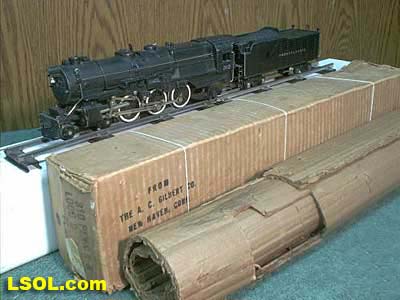 It was my favorite engine for many years before I discovered that it was really an engine from the competition. I loved the shape and look of the K-4. 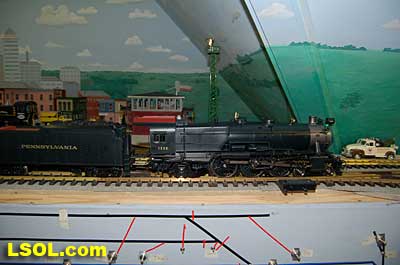
So when I saw the Accurcraft PRR K-4's at the East Coast Large Scale Train Show back in April, I felt that familiar love for an engine that had been such a big part of my childhood. I had to have one. Talking with the Accurcraft people at the show, I discovered that I could order one from a dealer and that it would be out in June. So I ordered one with a Phoenix Sound system. When it arrived, I was not disappointed. 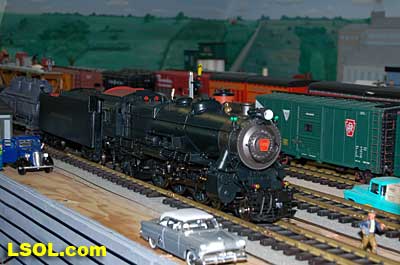 In 1907 the PRR recognized that their current locomotives were not powerful enough to pull the increasingly longer steel car passenger consists, so they purchased a Pacific class, [4-6-2] K-28 from the American Locomotive Company. From that locomotive and after purchasing another ALCO experimental Pacific [class K-29] the PRR developed their own 4-6-2. They refined their design and built their own K-4 class Pacific [number 1737] at their Juniata shops in May of 1914. From then until 1928, the PRR produced a total of 426 class K-4s. These engines were not as powerful as some later designs by the PRR, but they continued to pull passenger trains until the end of steam on the PRR. They were assigned to all of the major first class PRR passenger trains, including the Broadway Limited. They could be seen throughout the system pulling the Tuscan red PRR heavyweight passenger cars and later Tuscan red streamlined passenger cars on the Pennsy until 1957 when the PRR replaced all steam with diesel.
The PRR K-4s could be seen running side by side with the NYC Hudsons on the four-track mainlines of both railroads where they ran parallel across northern Indiana and Ohio on their way to and from Chicago during the 1920's to 1940's. 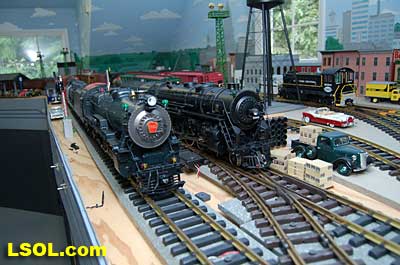 The prototype locomotive and tender was over 84 feet long and was equipped with 80-inch diameter driving wheels. They operated with a boiler pressure of 205 pounds with a grate area of about 70 sq feet. The engine weighed 320,000 pounds and had a tractive force of 44, 500 lbs. The tender had an 11,300-gallon water and 22 ton coal capacity. The Accurcraft K-4s is a beautiful model of the real thing. It is handcrafted from brass, steel and die-cast materials and lives up to the quality that Accurcraft has become known for in its locomotives. This is a fine-scale model with a Pittman DC gear head motor, steel running gear and frame, and excellent cab interior details.
The locomotive arrived packed in a large cardboard carton with foam padding. After removing the engine and tender boxes from the large cardboard carton, I opened the familiar red and yellow boxes. 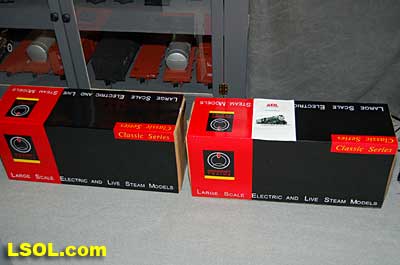 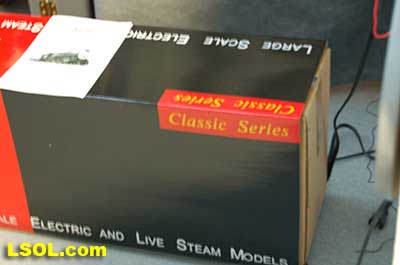
The engine came packed inside a steel frame and fastened to a wooden packing floor. The tender was packed in a foam-padded box. 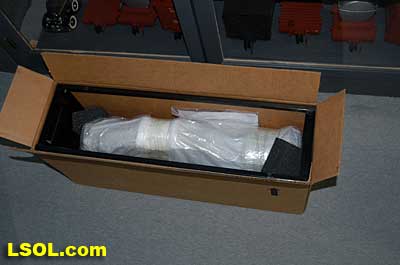 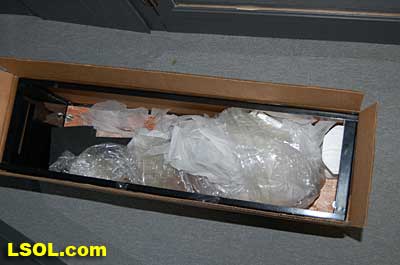 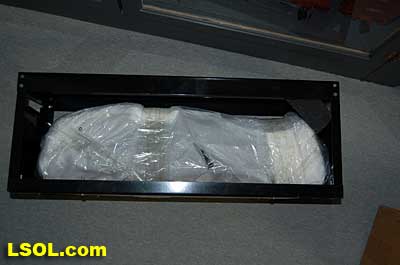 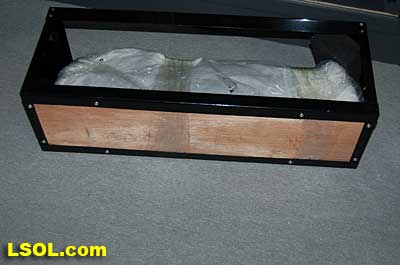
The wooden base had to be unscrewed from the frame and the plastic wrap and tape that fastened the models to the base had to be cut to free the locomotive and tender from the packaging. Although the packing was designed and approved by UPS, my engine had a broken front coupler and one of the water drainpipes was dislodged from its place on the engine. 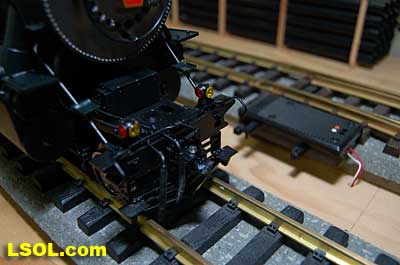 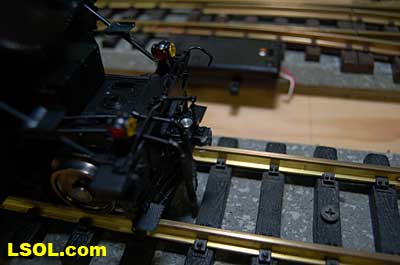
I was able to refasten the drainpipe, but the coupler will have to be replaced. Cliff at St Aubins called me to tell me they were sending a replacement coupler after I sent an email explaining the situation. It will be easy to replace. 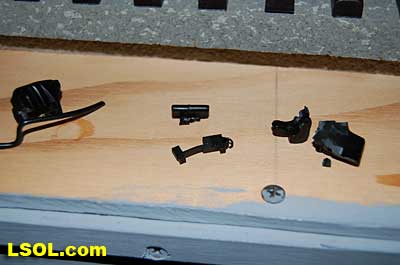 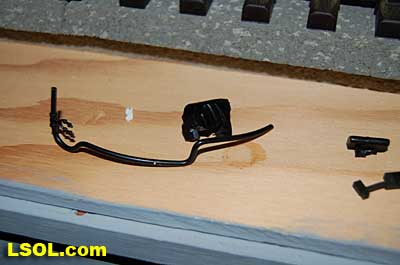
After removing the models from the packaging, I put the locomotive in my foam cradle and lubricated it and the tender as directed by the instruction booklet packed with the models. Accurcraft recommends that all of the moving parts on the locomotive and tender be lubricated before attempting to operate it. They also explain that the main gearbox has been lubricated at the factory and that all parts should be lubricated every 25 hours of running time. You can get a good idea of the underbody details from the photos. 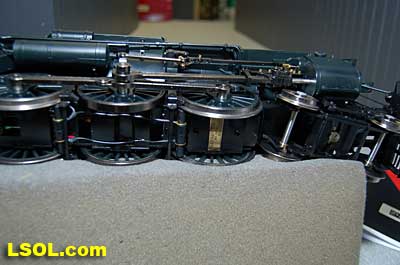 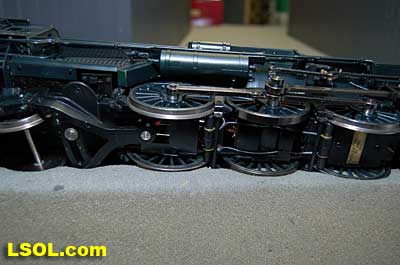 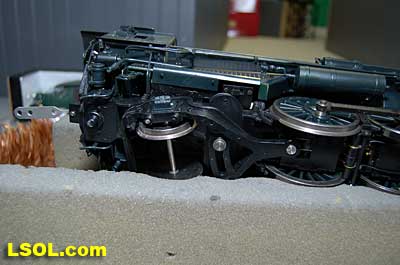
The Walschaert valve gear with D slide valves is very well done. 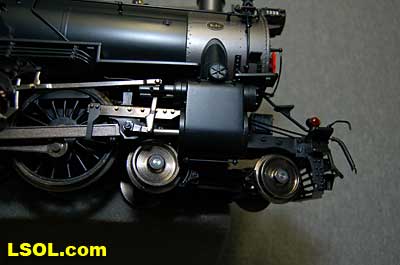 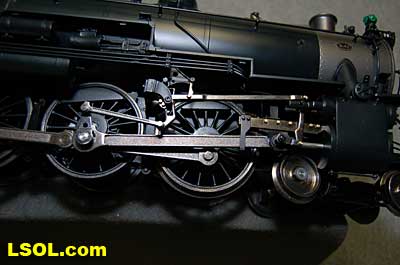 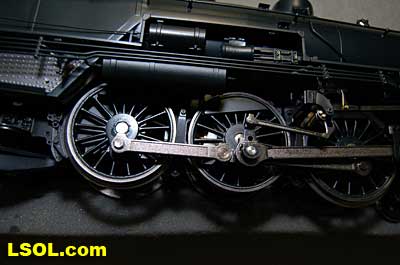
The trailing truck and firebox are accurately produced. 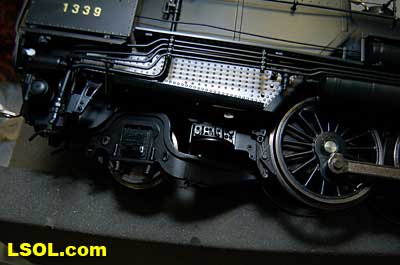 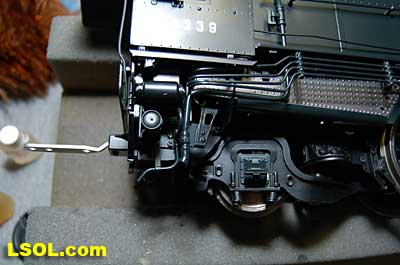
The model locomotive is 22 inches long, 6 3/4 inches high and 4 3/8 inches wide. The tender is 14 3/4 inches long, 5 7/16 inches high and 4 1/4 inches wide. The two combined are almost 39 inches over the couplers. These translate to the accurate dimension in 1/29 scale. The locomotive weighs in at 19 pounds and the tender at 7 pounds. This locomotive will run on 4-foot radius curves, according to the manufacturer. I found that it handles 8-foot radius and LGB 16000 switches very well. Accucraft warns that you need at least a 3-inch clearance for locomotive overhang on curves. Comparing this loco with the USA Trains NYC Hudsons, I found the Hudsons to be 1-2 inches longer locomotives and the tenders to be a little more than 2 inches longer than the Pacific's tender. 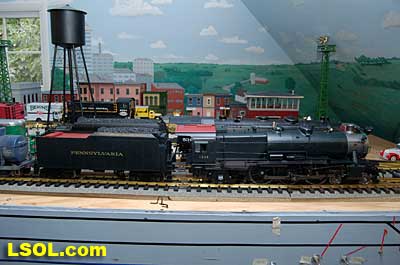 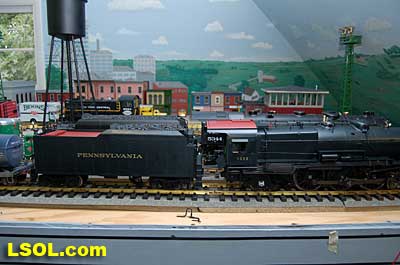 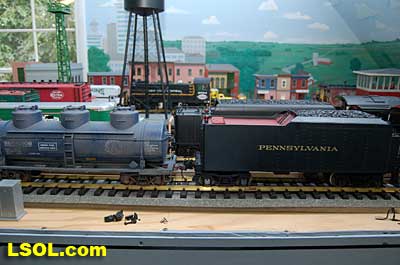
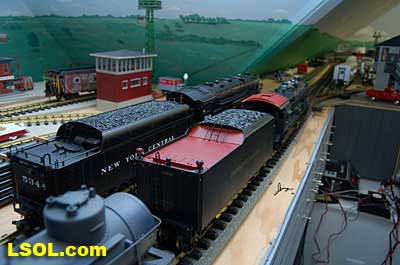 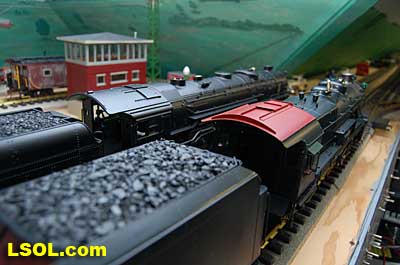 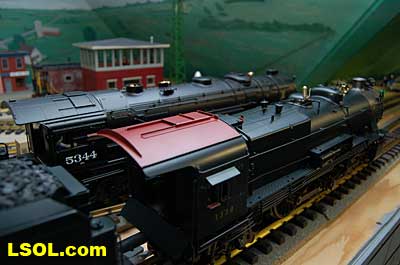
The K4s is offered in pre and Post WWII versions. The major difference that I could see in the two different models is in the pilot. The post-WWII version has a drop coupler and a cast pilot. This pre-war engine has a slatted pilot and is numbered 1339, which is prototypical. The locomotive was completed by the Juniata shops in May 1919 and had the construction number 3474. In September 1954 it was assigned to the Pittsburgh Division of the Pennsylvania Railroad, so that it would have been an easy move for it to my Big Four NYC in that year. It retained the number 1339 throughout its life; which ended when it was scrapped in February 1956. 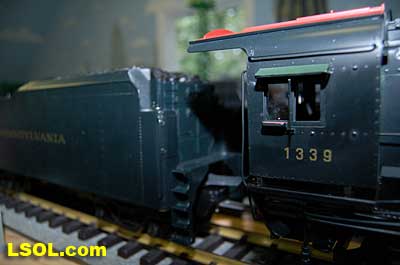 The pilot has all of the details found on the prototype and the front markers are excellent. The headlight is a very bright white LED. 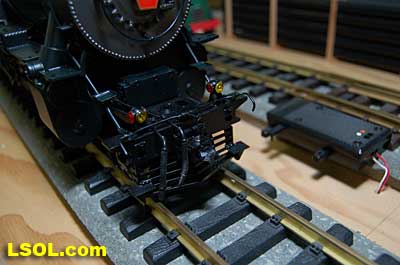
Viewing the front of the engine, it appeared the Pennsy keystone was slightly out of square. 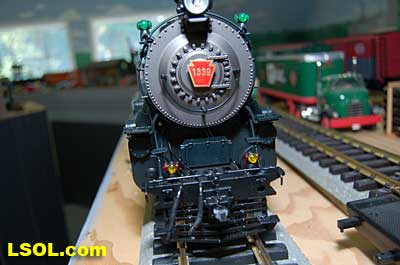 I found that it moves easily, so I righted it and it looks fine now. The "cowcatcher" and front steps show that the engine was used for both passenger and freight service.
The locomotive is painted in a black/green with a silver smoke box and a red cab roof.
The valves, tanks and piping are excellent. 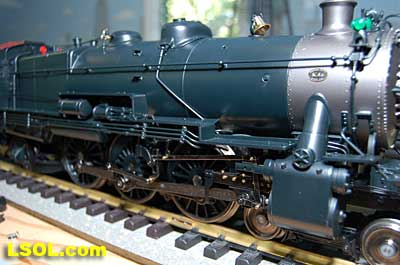 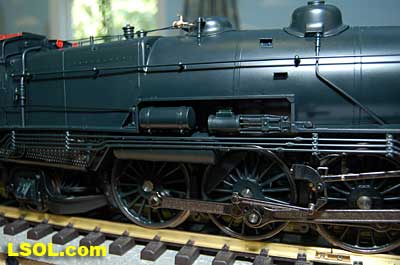 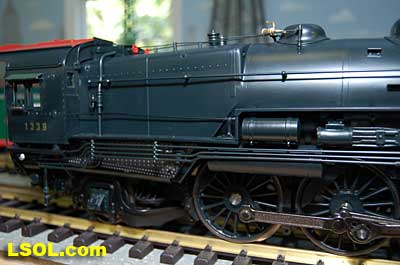
The hinged drop deck is nicely detailed but does not extend to the tender deck except when the tender is connected in the tightest of three positions.
The prototypical green interior walls and the backhead details are very sharp with the valve wheels painted the correct red. 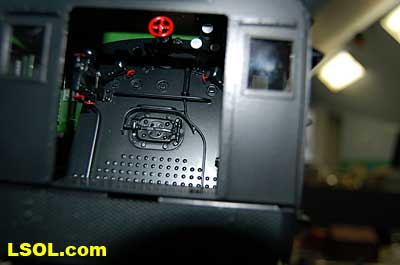
The cab windows have a sunshade and elbow padding as on the prototype. 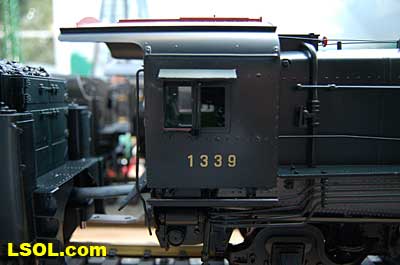 The high headlight and number board with a generator just behind is a trademark of Pennsy locos. 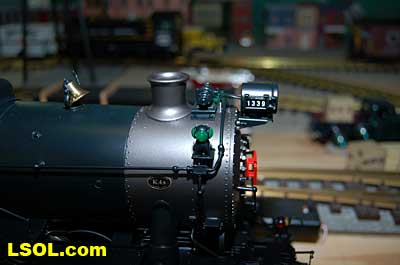 Accucraft has a real brass bell and the sand dome, with the sand lines running down to the drivers, are very accurate. 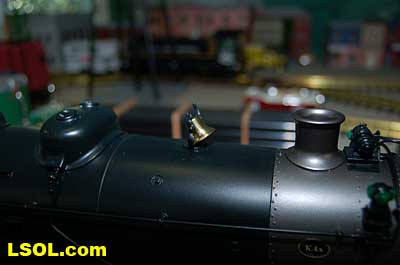
The brass whistle needed to be re-glued, but the rest of the top of the engine is completely accurate. 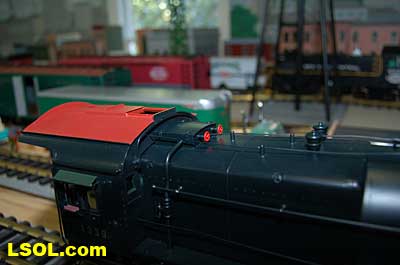 The cab roof is painted in a dull red and has a working roof hatch. 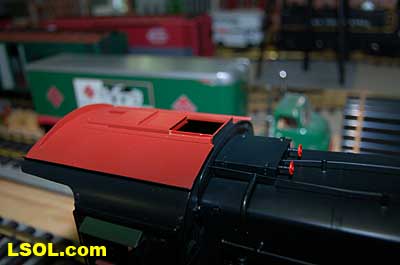 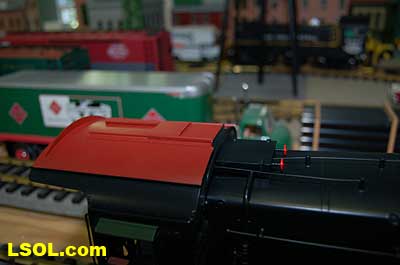
The locomotive has a steel drawbar with three holes for connecting the tender at various distances from the locomotive.  The tender has a fairly wide electrical connector that plugs into a receptacle on the loco. 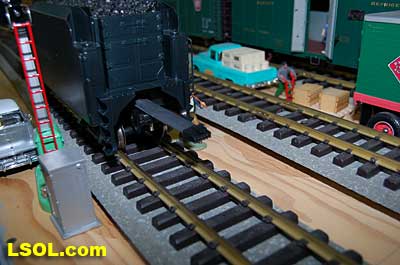
The tender has a very detailed front wall with prototypical multiple coal doors molded into a single piece. 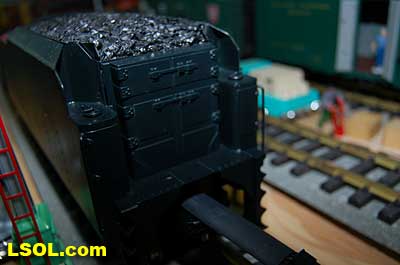 The tender is painted the same black/green as the loco and has a dull red top deck behind the coal load. The water bunker hatch and ladders are very nicely done. 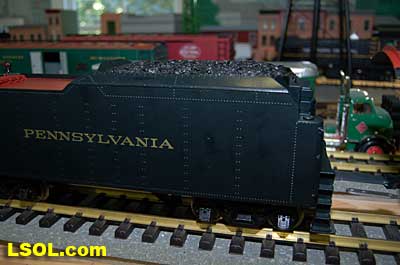 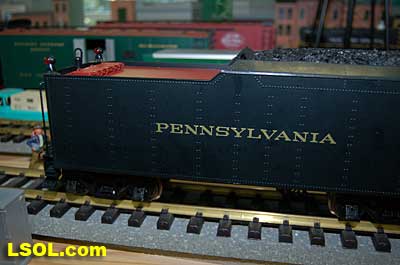
A water scoop is attached under the tender. It appears to be more fragile than the ones found on the NYC Hudsons. 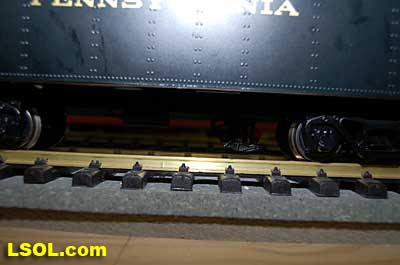 The rear of the tender contains a builder's plate, and has a handrail and ladder attached. Missing is the coal and water capacity lettering that I am used to seeing on the NYC tenders. Apparently the PRR did not put that info on the back of the tender. The plate includes the number, class and engine number. 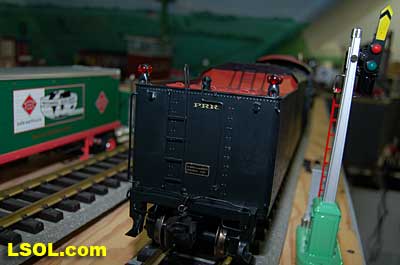 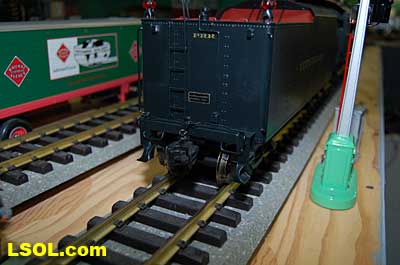
The tender top deck and coal load include several fine details found on the prototype
The water tank door conceals the controls for the sound system. 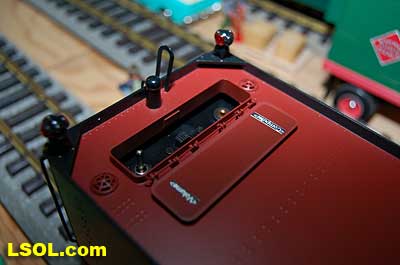
Removing the coal load provides access to the space inside the tender where the Phoenix sound system resides. There is plenty of space inside the tender for several electronic systems. 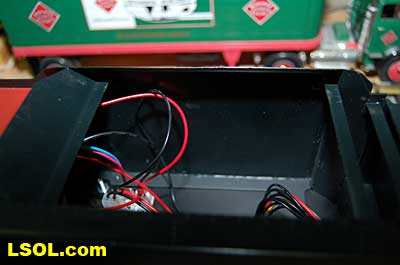 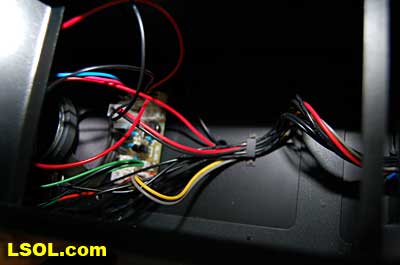
Since I had no Tuscan red passenger cars, I decided to allow the Pacific to pull some NYC freight on my railroad. It looks pretty good from all angles. 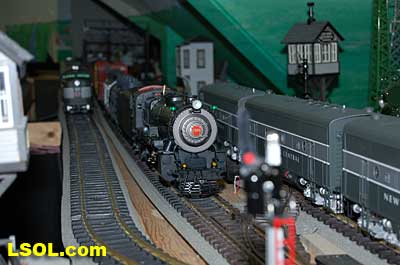 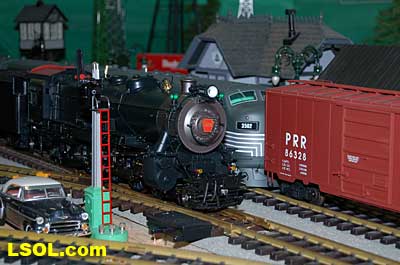 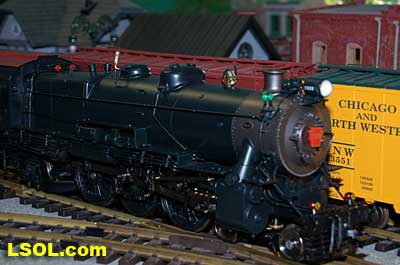
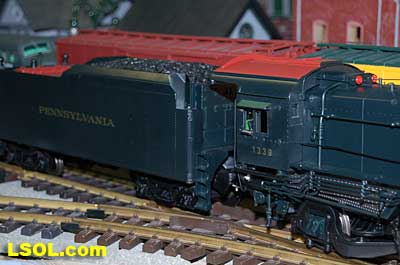 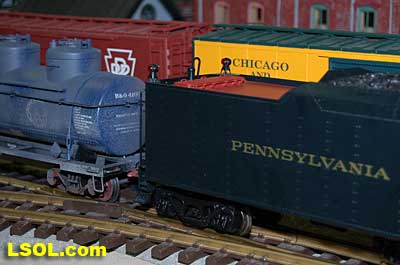 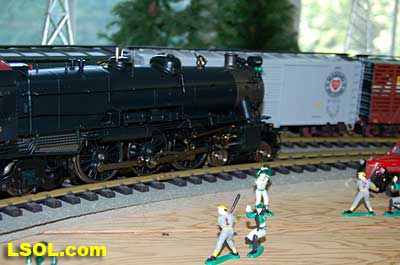 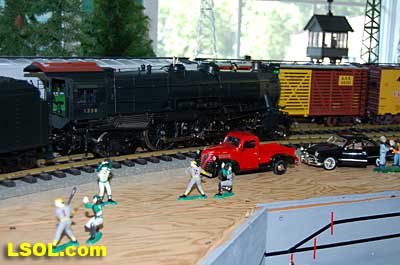
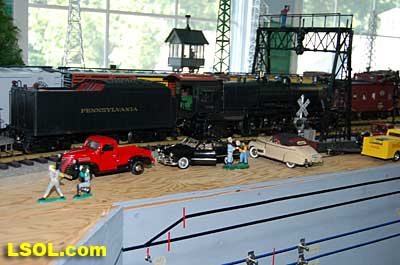 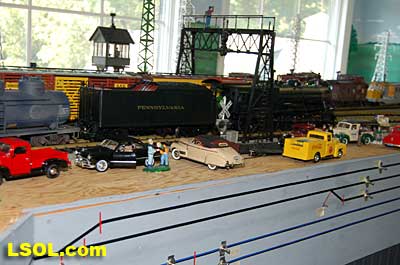 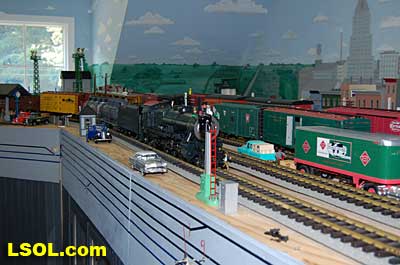 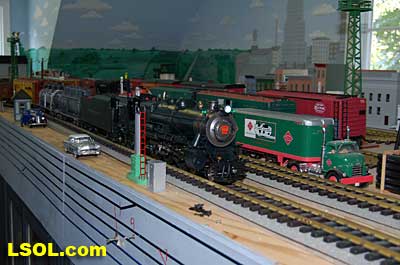
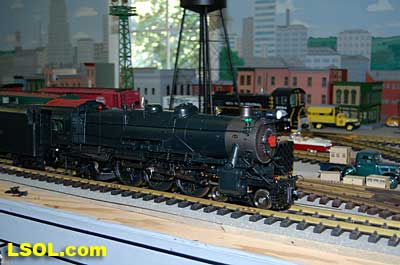  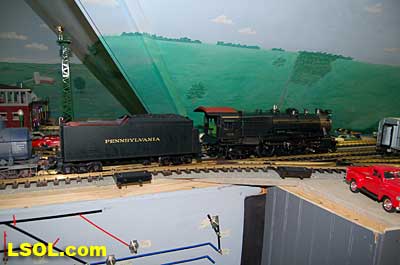 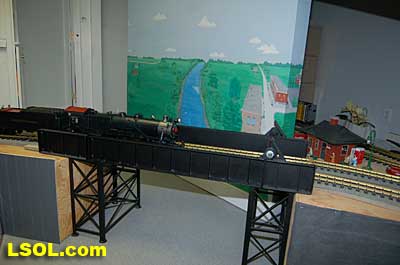
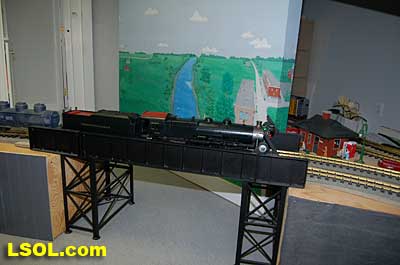 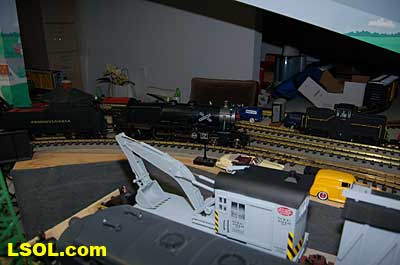 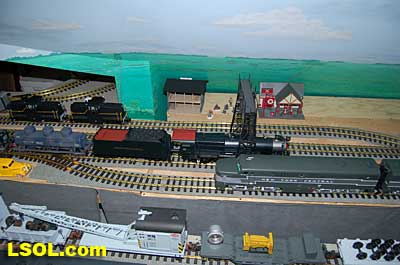 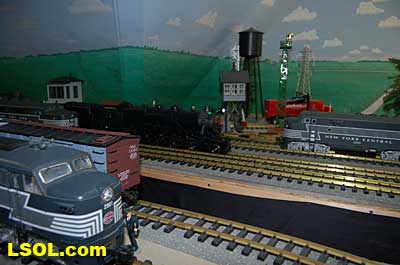
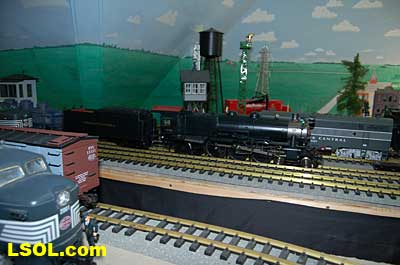 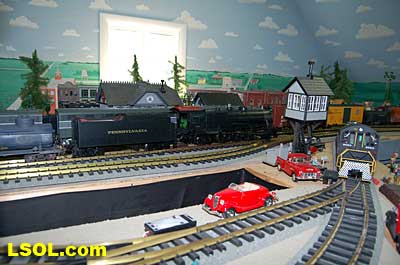 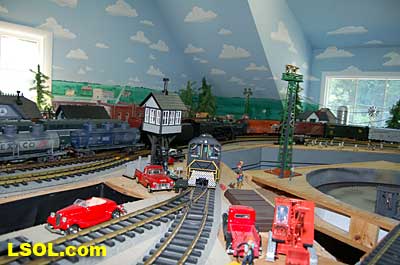 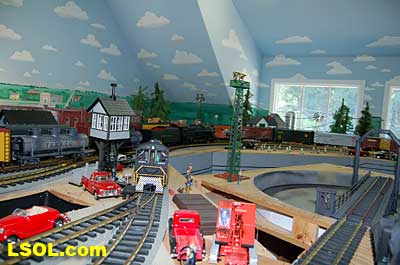
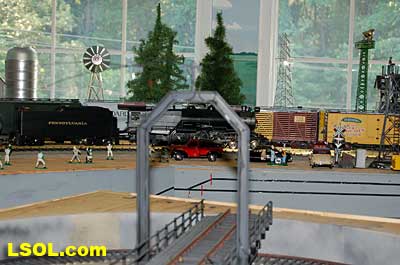 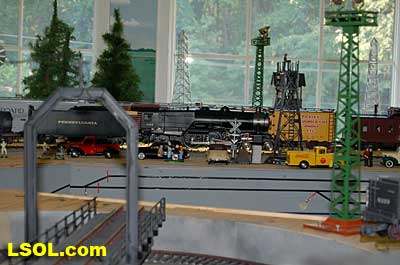 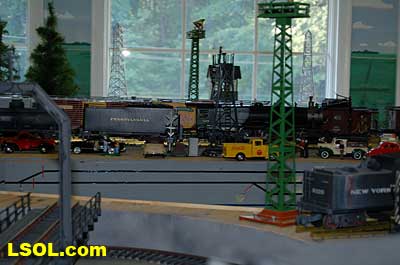
The Accucraft K4s Pacific locomotive is a beautiful steam model. The cab interior details, operating windows, detailed fittings, domes pipes and handrails and rods, gears and crossheads make it a fine scale model. The Phoenix sound system appears to be very accurate in its fidelity to the real thing. I recommend the model to anyone who is interested in steam engines found on the PRR from the early to mid 1900's. It is a great runner and beautiful to look at and hear. The price with sound is a little over $1800, making it a real bargain for the price. 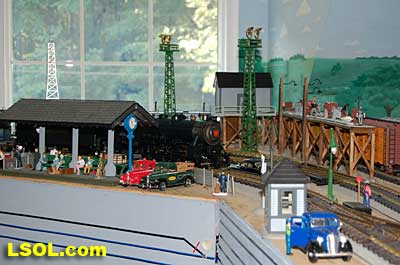 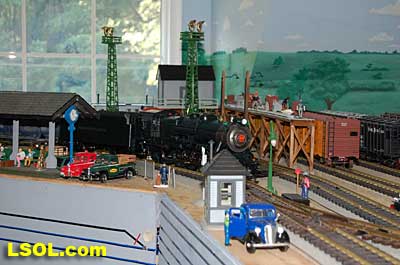 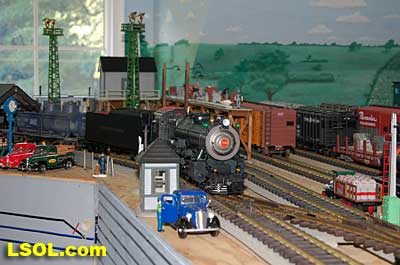
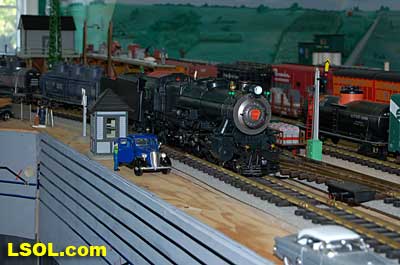  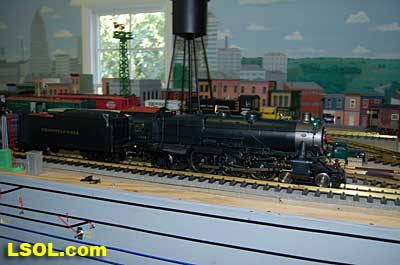 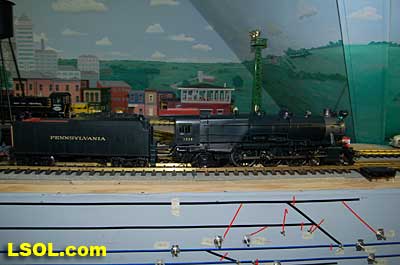
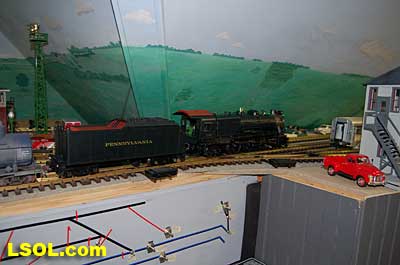 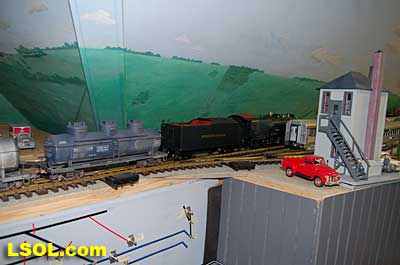 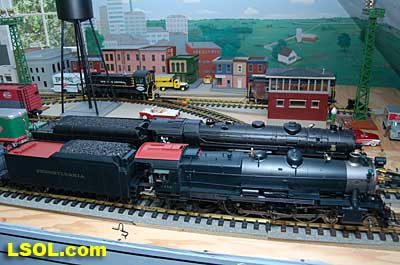 
  Top of Page
|



